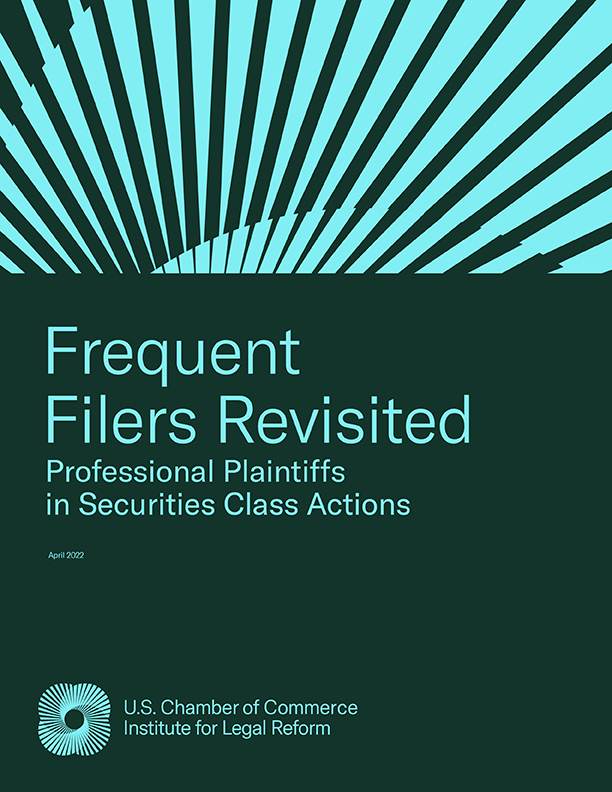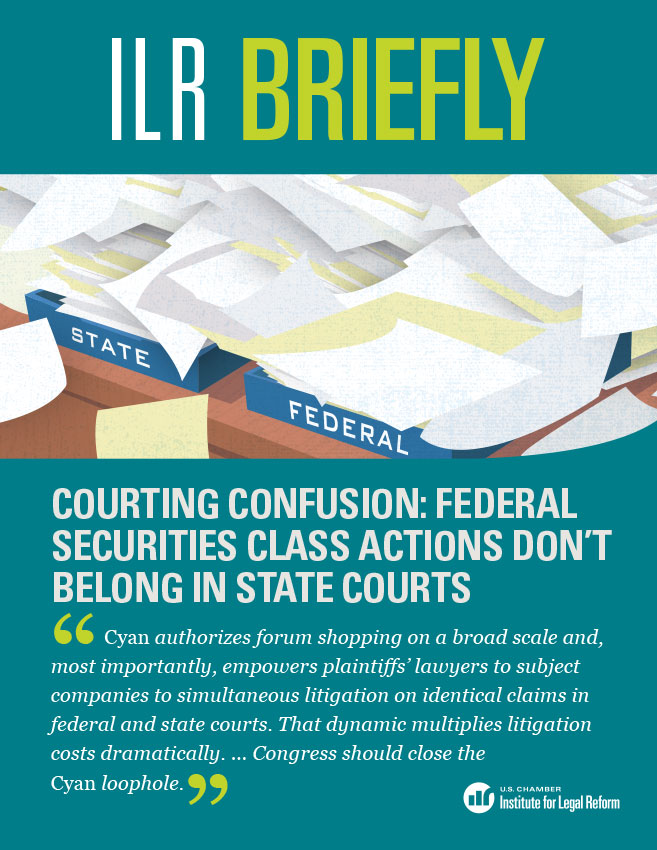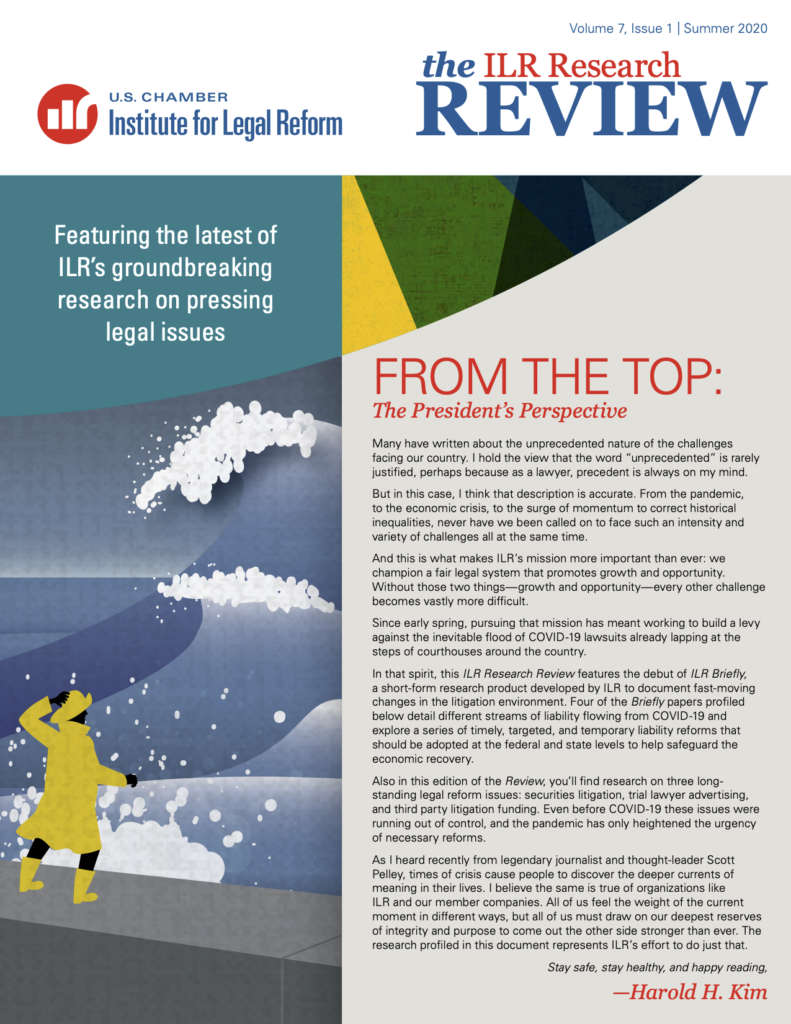The U.S. Supreme Court recently took a close look at securities class actions, hearing oral argument in Halliburton v. Erica P. John Fund on the continued viability of the “fraud-on-the-market” doctrine, which relieves plaintiffs of the obligation to prove that they actually relied on the company’s alleged misrepresentations.
The defenders of fraud-on-the-market claim that these lawsuits benefit injured shareholders by providing billions of dollars in recoveries through settlements. Fraud-on-the-market, they claim, should be preserved—wholly apart from whether it makes economic sense—in order to maintain these supposed benefits for shareholders.
A recent Navigant study, Economic Consequences: The Real Cost of U.S. Securities Class Action Litigation exposes the fallacy that these class actions actually benefit shareholders.
Because many members of the plaintiff class own stock in the defendant company, they are in effect suing themselves. And even with respect to the class members who no longer own stock in the company, it is peculiar that lawsuits designed to provide compensation for one set of innocent investors impose economic costs on another set of innocent investors—the owners of the defendant company. Because of these characteristics, many academic commentators have criticized securities class actions as a “pocket-shifting exercise” in which one set of innocent investors pays another, with significant transaction costs in the form of legal fees to plaintiff and defense counsel.
But that is not the only economic burden that these lawsuits impose on innocent investors.
The announcement of the filing of a securities class action by itself harms the investors in the defendant company, and—because these lawsuits typically are filed shortly after the end of the “class period” that defines the members of the plaintiff class—the lion’s share of the investors harmed will also be members of the plaintiff class.
The Navigant study found that the shareholders lose $39 billion annually upon the announcement of these lawsuits, compared to the average of $5 billion that investors receive as a result of lawsuit settlements. Since December 1995, when Congress passed the Private Securities Litigation Reform Act (PSLRA) to rein in abusive shareholder lawsuits, shareholders have lost at least $701 billion in investment value due to the filing of securities fraud class actions. During the same period, the settlement recoveries received (including expected payments in settlements not yet finalized) totaled $90 billion. The more than seven-to-one cost-benefit ratio precludes any argument that these suits are good for investors.
The study’s results should not be surprising to proponents of the fraud-on-the-market doctrine. The very economic theory that underlies fraud-on-the-market; namely, that the market price of an actively traded stock reflects all material public information (i.e., the market is “efficient”), implies that any expected economic “recovery” by plaintiffs in a securities class action will reduce the stock price of a defending company as soon as the lawsuit is anticipated, well before any recovery is realized years later. Thus, the expected cost of this recovery is paid up front by the company’s shareholders on whose behalf the lawsuit is brought. And that is precisely what the study documented—except the shareholders’ loss is many times greater than the amount the plaintiffs eventually gain.
Navigant also studied a rarely-examined aspect of the securities class action system: how the settlement funds are distributed. Once a settlement is agreed to, the defendant’s payment is fixed and the defendant has little interest in how the funds are ultimately distributed. This leaves the plaintiff’s lawyers effectively in charge of that process.
Two significant findings emerged from the examination of settlement fund distribution. First, a substantial share of settlement proceeds in Navigant’s case study of a typical securities fraud class action—30%—were allocated to the top 50 out of over 130,000 claimants. Half of those claimants switched between buying and selling ten times or more; three of them alternated over 200 times during the class period, indicating that they likely are sophisticated institutional investors, such as hedge funds, utilizing frequent-trading strategies while the alleged fraud supposedly was underway.
Second, the settlement allocation procedure ignores the profits that these sophisticated investors’ trades generated as a result of the alleged inflation of the stock price due to the company’s claimed fraud (profits that, of course, those investors are permitted to keep). Navigant found that, if these profits were considered, damages allocated to these 50 largest claimants would have decreased by 25%. In addition, 15% of the settlement proceeds were allocated to claimants that overall reaped gains, not losses, from the alleged inflation of the stock price.
The only group for whom the current securities class action process makes economic sense is the lawyers who file these cases. Plaintiffs’ lawyers’ contingency fees on already-settled cases and cases in which settlements are expected total $19 billion for class action cases filed since 1996. Moreover, estimates of defense costs run between $22 billion and $30 billion for these cases, because each defendant must be represented by separate counsel. That is a significant additional cost—borne by innocent shareholders—for litigation that itself inflicts more harm than benefit on investors.
View PDF


